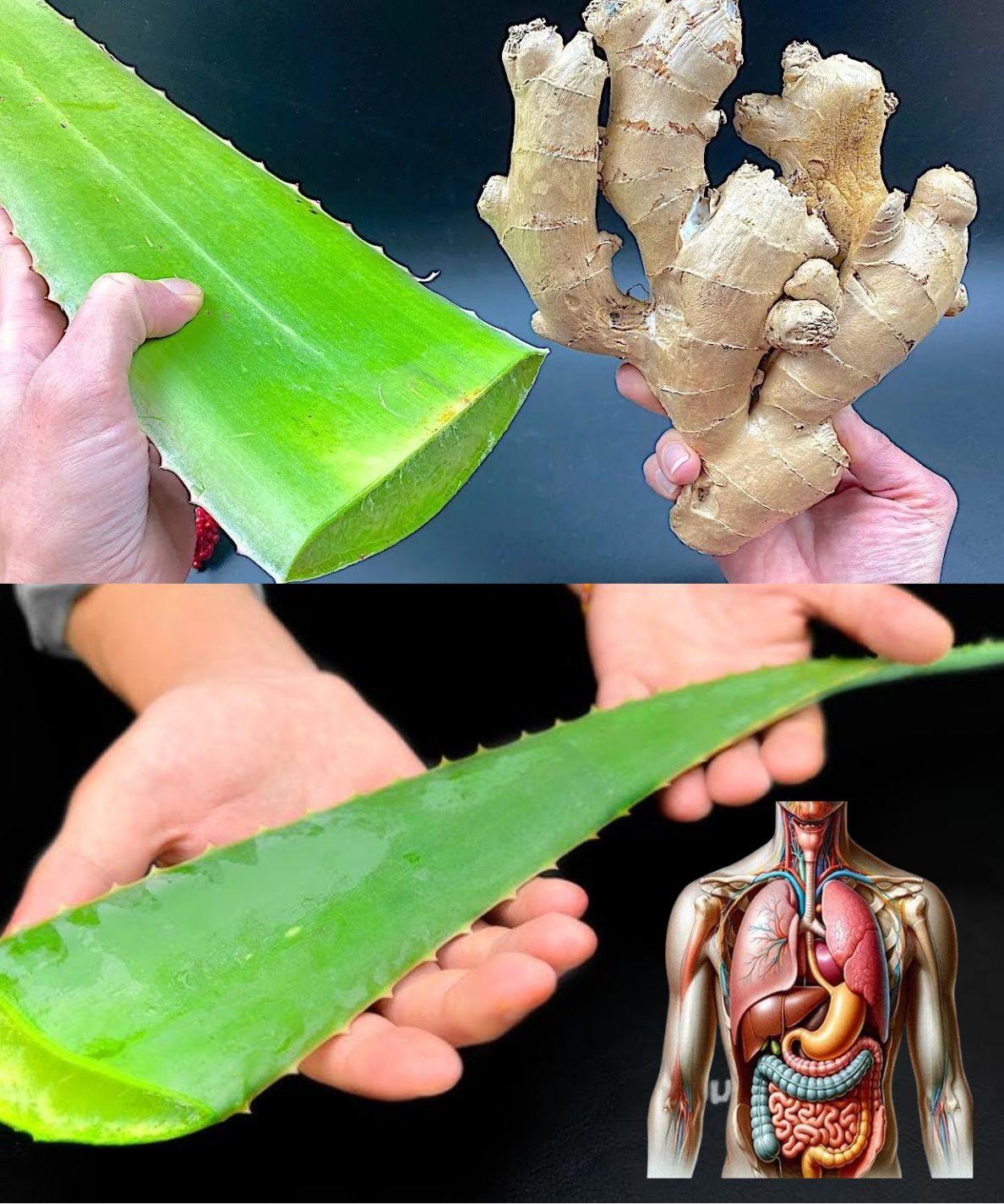ADVERTISEMENT
**150 Times Stronger than Garlic and Lemon! Destroy All Bacteria!**
In the pursuit of better health and disease prevention, many people turn to natural remedies that have stood the test of time. Among the most commonly used ingredients for boosting health are garlic and lemon, both celebrated for their powerful antibacterial, antiviral, and immune-boosting properties. However, there is another superfood that many overlook in favor of garlic and lemon: **Horseradish**.
Horseradish, a pungent root vegetable often used to add heat and flavor to food, may not get as much attention as garlic and lemon, but it holds incredible potential for improving health. This unassuming root is packed with nutrients and compounds that make it **150 times stronger than garlic and lemon** when it comes to destroying bacteria and supporting overall health. It has been used for centuries in traditional medicine, and modern research is only now beginning to uncover its full potential.
In this article, we will dive deep into the extraordinary health benefits of horseradish, focusing on its potent antibacterial, antiviral, and immune-boosting properties. We’ll also explore the science behind why it’s so effective, and provide tips for how to incorporate this remarkable root into your diet. From improving digestion to fighting infections and reducing inflammation, horseradish could be the superfood you’ve been missing.
—
### **Understanding Horseradish: The Secret Superfood**
Horseradish (*Armoracia rusticana*) is a root vegetable that belongs to the same family as mustard, wasabi, and cabbage. It has been cultivated and used for medicinal purposes for over 2,000 years. In ancient Greece and Rome, horseradish was prized for its healing properties. Even today, horseradish is used in many cuisines around the world, often grated and mixed into sauces to accompany meats, fish, and other dishes.
Despite its long history of use, horseradish tends to be overlooked in favor of other more widely known superfoods. However, modern research is beginning to highlight its potent health benefits, especially its ability to fight harmful bacteria and support overall immune function.
What makes horseradish so powerful is a group of bioactive compounds known as **glucosinolates**, particularly **sinigrin**, which is responsible for the vegetable’s characteristic pungent flavor. When horseradish is grated or crushed, an enzyme called **myrosinase** breaks down sinigrin into **allyl isothiocyanate** (AITC), a compound with strong antibacterial and antifungal properties.
—
### **Why Horseradish is 150 Times Stronger than Garlic and Lemon**
Garlic and lemon are well-known for their antibacterial, antiviral, and anti-inflammatory properties. Garlic contains a sulfur compound called **allicin**, which is responsible for its strong antimicrobial effects, while lemon is rich in **vitamin C** and citric acid, which have immune-boosting and antibacterial properties. However, horseradish surpasses both garlic and lemon in potency, making it a far more powerful weapon against harmful bacteria.
#### **1. Allyl Isothiocyanate: The Key Compound in Horseradish**
The compound **allyl isothiocyanate** (AITC) in horseradish is responsible for its strong antibacterial action. AITC is a volatile compound that has been shown to effectively destroy harmful bacteria, fungi, and even some viruses. Research has found that AITC can penetrate bacterial cell membranes and disrupt their ability to replicate and survive. This makes horseradish a powerful natural antibiotic that can fight off infections and bacteria more effectively than garlic or lemon.
Studies have demonstrated that AITC can kill a wide variety of harmful microorganisms, including **E. coli**, **Salmonella**, **Staphylococcus aureus**, and **Listeria**, all of which can cause serious foodborne illnesses and infections. Horseradish’s ability to destroy these pathogens makes it an excellent addition to your diet, especially if you are concerned about bacterial infections or digestive issues.
#### **2. Potent Antibacterial and Antifungal Properties**
Horseradish’s antibacterial and antifungal properties are particularly potent due to the combination of AITC and other bioactive compounds, including **glucosinolate derivatives** and **phenolic acids**. These compounds work synergistically to create an environment in which harmful bacteria and fungi cannot thrive. This makes horseradish an excellent natural remedy for preventing or treating infections caused by bacteria or fungi.
One study found that horseradish extract was highly effective at inhibiting the growth of **Candida albicans**, a yeast that is responsible for infections like thrush and urinary tract infections. Additionally, horseradish has been shown to disrupt the biofilms formed by **Staphylococcus aureus**, a common bacteria that can lead to serious skin and wound infections.
#### **3. Sinigrin: A Natural Antimicrobial**
The glucosinolate compound **sinigrin** found in horseradish contributes to its antimicrobial properties. When horseradish is prepared (grated, crushed, or chewed), sinigrin is broken down into AITC, which has been shown to inhibit the growth of **bacteria**, **viruses**, and **fungi**. The ability of AITC to fight off a wide range of pathogens makes horseradish one of nature’s most effective antimicrobial foods.
Studies suggest that sinigrin also has an impact on the body’s **immune response**. By activating certain immune cells, sinigrin can help strengthen the body’s defense mechanisms against infections. In fact, horseradish has been used in traditional medicine to support the respiratory system, treat sinus infections, and reduce inflammation associated with colds and flu.
For Complete Cooking STEPS Please Head On Over To Next Page Or Open button (>) and don’t forget to SHARE with your Facebook friends
